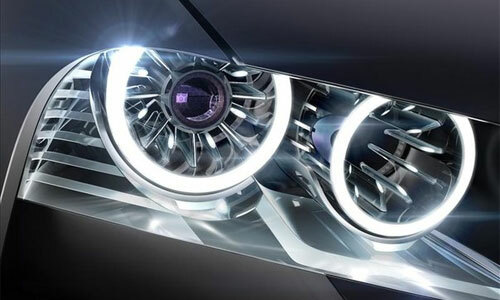Every motorist should pay special attention to his personal safety. The car is a tool of increased danger in the daytime, and the night probability of occurrence of emergencies increases many times, because visibility is limited. In addition to limited visibility, the driver also faces such a problem as the headlights of oncoming vehicles, which blind the eyes and do not give an adequate assessment of the situation. In order to increase visibility, it is necessary to improve lighting. For this purpose earlier drivers installed extra lights on their "iron friend".

To date, there are other methods to increase visibility at night. In particular, these are gas discharge lamps. Their technical characteristics allow improving visibility almost threefold. They represent a xenon lamp, in the device of which an inert gas is involved. Gas discharge lamps are divided into xenon and bi-xenon lamps. What is the difference between xenon and bixenon?
General Information
Before determining the difference between xenon and bixenone, it is necessary to understand the general information about these discharge lamps:
Xenon
This is a mechanism filled with an inert gas. Its main difference with respect to simple lamps is that there is no filament. The basic principle of the device is simple: a high voltage, passing between two electrodes, causes the gas that is filled with the xenon lamp to glow. Thus, the output is constant radiation, which does not change its direction;
Bixenon
This is a kind of xenon lamp. However, it incorporates a mechanism designed to provide a function of changing the direction of the lamp emission. As such a mechanism, a metal curtain is used, which is moved by means of a magnet. In this case, various zones of the bi-xenon lamp are opened.
Difference between xenon and bi-xenon
Consider the main differences between these discharge lamps. Xenon lamps allow you to get only the low beam. Bi-xenon lamps, in turn, allow you to change the light from near to far. The bi-xenon lamp is the same xenon, the technology of which includes the ability to switch the focal state, that is, the change in the passing beam to a distant one. This is an advanced xenon lamp, changing its position by means of a switching reflector-curtain or a "floating bulb".

Xenon is usually included in the set of representative cars. These headlights provide maximum visibility, guarantee very good track lighting. Ordinary halogen lamps do not even compete with xenon lamps. The cost of xenon is also higher, but the price of the product is completely justified, because the degree of visibility directly affects the personal safety of the driver. Xenon, despite its brightness, does not blind the eyes of motorists who were traveling towards. In addition, it is economical in use, the shortest period of operation is two years.
Xenon and bi-xenon lamps differ only in difference in the organization of the glow direction and difference in the focal state. Regarding the principle of providing lighting, the degree of its brightness, the economy of use and reliability, they have the same indicators. If there is no separate optics in your car, it's better to prefer bixenone. Installation of it can be done manually, and it is important to carefully read the instructions that accompany the product. When choosing lamps, it is worthwhile to orient, including the designation of its base.
Conclusion
So, let's summarize. What is the difference between xenon and bixenone:
- Bi-Xenon lamps are a mechanism capable of providing both near and far illumination;
- In bi-xenon lamps there is a function of correcting the direction of radiation;
- The average price of biksenone is higher than the cost of xenon lamps.
In other characteristics, car lamps are equal. What exactly to purchase depends on your budget, preferences and equipment of the car. Not always buying bi-xenon lamps is justified. Xenon is also a modern mechanism that provides excellent track lighting. Both xenon and bixenone are distinguished by good consumer indicators. Both lamps significantly increase the safety of the motorist on the road.



